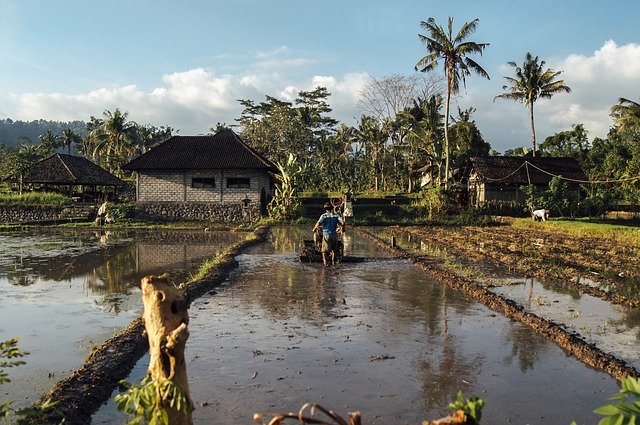Post-independence: 1970s and 1980s
Rapid population growth accompanied the post-war economic boom and food shortages led to concerns about agricultural productivity. In the mid-1960s India imported cereal but the success of ‘green revolution’ technology transformed the country to achieve self-sufficiency by the early 1970s. Similar successes followed in South-East Asia in the 1970s and Bangladesh in the 1980s.
This ‘green revolution’ relied on a technological package that included improved varieties of wheat and rice capable of producing heavy yields of grain when irrigated and supplied with large amounts of fertilizer. This often resulted in double the amount of cereal harvested per cultivated area.
In the 1970s there was significant investment in irrigation in Africa seeking to replicate the Asian green revolution.

1980s and 1990s
By the 1980s it became clear that many irrigation projects had not replicated the Asian success. This was true for large-scale schemes of thousands of hectares which were run (as in colonial times) by government agencies. These government agencies operated and maintained the infrastructure and supplied inputs such as seed and fertilizer to small-scale tenant farmers. The government agencies deducted a payment for these services from the farmers’ harvests.
There was also limited success in many smaller schemes of a hundred hectares or less where a community or group farmers shared a pump to deliver water from a river or lake.
Reasons for the lack of success included:
- inappropriate technical design; there was often insufficient knowledge of hydrological conditions, including existing water use by small-scale farmers
- high cost, low performance; a lack of market linkages (power supply, input and output market failure) , land tenure conflicts.
- and a need for designs to better serve small-scale irrigators; a lack of understanding of how irrigation fits with wider livelihood strategies.
These observations about shortcomings in African irrigation fed into a broader international political narrative in the 1980s that saw state-run activity as inherently inefficient and/or corrupt, exemplified by ‘top-down’ control by government irrigation agencies.
This view sought to introduce market incentives by ‘turnover’ of irrigation management from government agencies to associations of farmers and commercial suppliers of goods and services. As in other parts of the world, such ‘structural adjustment’ measures were pursued in many parts of sub-Saharan Africa.
Such efforts to reduce state control in irrigation aligned with other contemporary discussions about how much ‘experts’ and scientists truly understood local development contexts. Rural people’s indigenous knowledge was validated through participatory appraisal and planning systems developed by researchers such as Robert Chambers.
A Rapid Rural Appraisal was developed to understand what farmers were doing. Research looked at the farmers’ systems, what was required, what labour was available, and then design was undertaken. Irrigation practitioners started to become more farmer-focused when proposing designs and structures. At the same time, reports published by FAO highlighted the extent of unofficial irrigation in sub-Saharan Africa.
